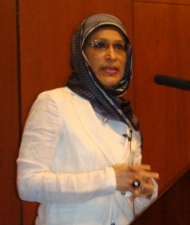Kuwait Data for BIRO AnalysisMona Al Khawari (Al Amiri Hospital, Kuwait City, Kuwait) First BIRO Academy Residential Course, Kuwait City, Kuwait, 2nd May 2009
In her speech, Mona Al Khawari, Head of the Diabetes Pediatric Division, Al-Amiri Hospital, Kuwait, presents the contents of the database maintained at the Division, and explains how it was possible to process and analyze the data in preparation of the BIRO training session. The Pediatric Hospital Clinic at the Amiri Hospital established a diabetes register since 1998, in correspondence with the participation to the Diamond project. The registry of children with diabetes included yearly newly diagnosed cases admitted to the paediatric diabetes care unit. Computerized software has been realized for the scope using an old version of DOS initially, then implementing a novel application in MS Access. The major goals of the registry database included:
The database revolves around five tables (variables):
Data are collected each year at annual visits. A pilot analysis has been run, although not all patients were entered into the system for the lack of resources and dedicated staff. The analysis showed that relevant information can be derived from diabetes registry, provided that data is complete and sufficient, taking into account the difference between hospital or population-based data. The slides presented at the EUBIROD meeting show how data linkage between different archives marks the difference between data relative to patients and/or visits, with different combinations available across tables. Nevertheless, the analysis demonstrated that data collected on diabetes can be easily standardized using international definitions for the rapid computation of diabetes indicators. Tables from Al Amiri hospital have been analyzed complying with BIRO definitions adopted for EU reporting. During the EUBIROD training session, the Amiri data have been successfully transformed into the BIRO XML export and loaded onto a Postgres database to launch the statistical engine. Finally, a BIRO report has been produced using the sample dataset from Kuwait (results not shown). |


